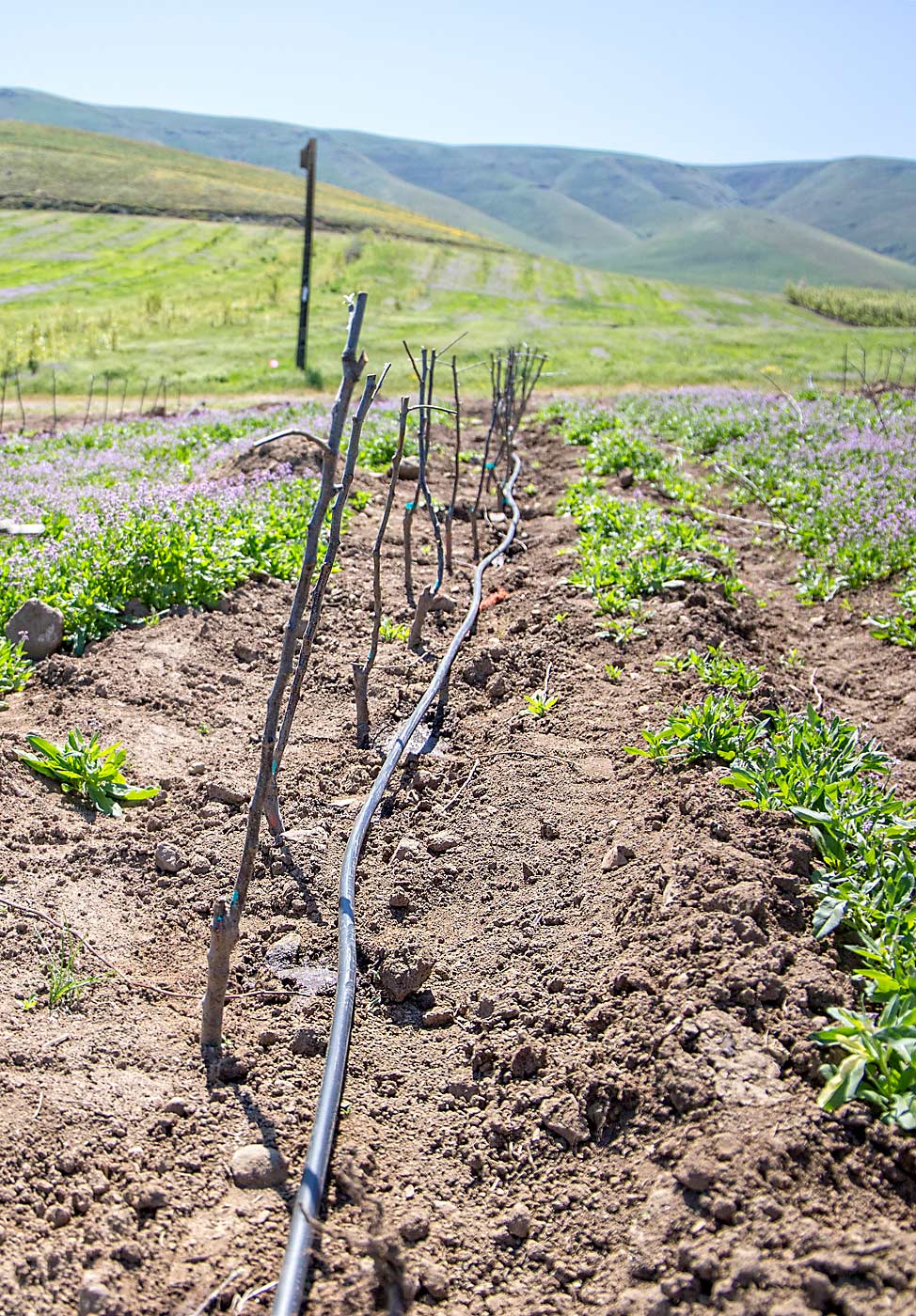
As Washington tree fruit orchards expand into hillsides beyond the reach of irrigation canals, growers may want to steal a page from a wine grape playbook: Pay attention to how watering trees over time may affect soil.
Groundwater and surface irrigation are not the same. Your soil, and therefore your trees, will know the difference. So should you. Generally speaking, surface irrigation water tends to wash away minerals and cations that build up in soil. Well water can be high in calcium carbonate, iron or sodium.
Joan Davenport, professor emeritus at Washington State University, has researched enough soils throughout Central Washington to know they often are high in sodium. Sodium crowds out other nutrients, including calcium, which is critical to cell wall strength. That can lead to floppy leaves in wine grapes and bitter pit in apples.
Several years ago, wine grape growers consistently brought in soil samples from struggling vineyards that tested high in sodium. From 2016 to 2018, Davenport surveyed soils throughout the state’s wine grape growing regions and typically found them low in salt but high in sodium. The problem was worse in soils irrigated with ground water than surface water.
While she worked mostly with wine grape growers, Davenport believes the lessons apply to tree fruit as well, especially as the fruit industry expands its footprint into areas outside irrigation districts and taps wells to save trees in drought. Those things will take a toll over time.
“You keep putting this bad water on the soil and the longer you do that the worse conditions get,” she said.
She has always recommended growers test their well water for electrical conductivity — a measure of salinity — and sodium. For wells that are high in sodium, she recommends treating water to reduce sodicity or amending soils with gypsum or another source of calcium.
“Know the chemical content of your irrigation water,” recommended Tom Auvil, horticulturist for North American Plants and a former Washington Tree Fruit Research Commission project manager. Most labs will give results in parts per million, which growers can convert to pounds per acre.
Auvil noticed how ground water affects his soil chemistry at his own orchard in Orondo. His well pumps water that provides 1,600 pounds per acre of calcium carbonate and 30 pounds of nitrogen per acre.
Calcium carbonate is lime, which pushes soil pH just above the level trees like. He applies ammonium sulfate urea to bring the pH down to a more tree-friendly level.
In addition to testing, he recommends growers with young orchards make sure they schedule water applications appropriately. Water stress creates many problems that some growers mistake as nutrition stress, because long watering sessions sometimes push nutrients below the root zone.
“You cannot separate water from nutrition,” he said.
Green Acre Farms in White Swan has hundreds of acres of orchards on the slope of the Toppenish Ridge, well above the closest lateral of the Wapato Irrigation Project that serves the Yakima Valley floor below.
The farm tests soil twice per year, in the spring and fall, said Dale Gasseling, orchard manager. The well water is high in iron, which causes a surface crust to build up on the soil and inhibit water and nutrient penetration. His crews spread gypsum in the fall to “open up” the soil and divert some well water to a pond for aeration, which mitigates iron.
“These wells, it’s tough water,” Gasseling said.
Bernardita Sallato, a WSU tree fruit extension specialist with a soil science background, urges growers — and the industry in general — to link irrigation and nutrition in their minds as much as possible. If growers suspect a nutrition problem, she recommends checking their irrigation water and efficiency first.
“It’s nearly impossible to separate the two topics,” she said.
—by Ross Courtney
Related:
—How’s the quality of your water?






Leave A Comment